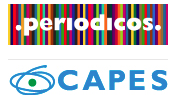Cognitive challenges of the representation of supply and demand in graphics prepared by university students
DOI:
https://doi.org/10.35699/2237-5864.2020.15867Keywords:
Economics Teaching, Comparative Statics, Labeling ErrorAbstract
This work analyzes records of graphical representation of supply and demand built by Engineering students, in order to identify cognitive challenges underlying the teaching of Economics. It is about an exploratory research that used graphics prepared by 47 students during an exercise carried out in an Economics class. Among the obtained results, it is possible to highlight the lack of familiarity with comparative statics as a method of economic analysis and the conceptual and graphic difficulty inherent to the distinctions between: demand and quantity demanded, supply and quantity offered. The results find an empirical support in related works in the literature about the cognitive challenges underlying the interpretation of graphs. The cognitive challenges observed refer to failures in coding, labeling and information processing, for example.
Downloads
References
CAMARGO FILHO, Paulo Sérgio; LABURU, Carlos Eduardo; BARROS, Marcelo Alves de. Dificuldades semióticas na construção de gráficos cartesianos em cinemática. Caderno Brasileiro de Ensino de Física, Florianópolis, v. 28, n. 3, p. 546-563, 2011.
CARSWELL, C. Melody; EMERY, Cathy; LONON, Andrea. M. Stimulus complexity and information integration in the spontaneous interpretation of line graphs. Applied Cognitive Psychology, n. 7, v. 4, p. 341-357, ago. 1993.
ESTRADA, Mario Arturo Ruiz. Economic graphical modeling from 2-dimensional graphs to multi-dimensional graphs. FEA Working Paper n. 19, 2010. Disponível em: https://ssrn.com/abstract=1367554. Acesso em: 15 maio 2019.
FRANZBLAU, Lauren E.; CHUNG, Kevin C. Graphs, tables, and figures in scientific publications: the good, the bad, and how not to be the latter. The Journal of Hand Surgery, v. 37, n. 3, p. 591-596, 2012.
GALESIC, Mirta; GARCIA-RETAMERO, Rocio. Graph literacy: a cross-cultural comparison. Medical Decision Making. v. 31, p. 444-457, 2011.
GARCÍA GARCÍA, José Joaquín; PERALES PALACIOS, Francisco Javier. ¿Influye la formación acadêmica de los estudiantes en su comprensión de las representaciones gráficas cartesianas? Enseñanza de las Ciencias, España, número extra, VII Congreso, p. 1-5, 2005.
GATTIS, Merideth; HOLYOAK, Keith J. Mapping conceptual to spatial relations in visual reasoning. Journal of Experimental Psychology: Learning, Memory, and Cognition, v. 22, n. 1, p. 231-239, 1996.
LEINHARDT, Gaea; ZASLAVSKY, Orit; STEIN, Mary Kay. Functions, graphs, and graphing: tasks, learning, and teaching. Review of Educational Research, v. 60, n. 1, p. 1-64, 1990.
MOCHÓN, Francisco. Princípios de economia. São Paulo: Pearson Prentice Hall, 2007.
PARKIN, Michael. Economia. São Paulo: Addison Wesley, 2009.
PASSOS, Carlos Roberto Martins; NOGAMI, Otto. Princípios de economia. 7. ed. São Paulo: Cengage Learning, 2016.
POSTIGO, Yolanda; POZO, Juan Ignacio. Cuando una gráfica vale más que 1.000 datos: la interpretación de gráficas por alumnos adolescentes, Infancia y Aprendizaje. Journal for the Study of Education and Development, v. 23, n. 90, p. 89-110, 2000.
READENCE, John; BEAN, Thomas W.; BALDWIN, Scoth. Content area literacy: an integrated approach, 8 ed. Dubuque, IA: Kendall-Hunt, 2004.
ROBERTS, Kathryn. L.; BRUGAR, Kristy A. The view from here: emergence of graphical literacy. Reading Psychology, v. 38, n. 8, p. 733-777, 2017.
SHAH, Priti. Cognitive process in graph comprehension. Tese de doutorado não publicada. 1995.
SHAH, Priti; CARPENTER, Patricia A. Conceptual limitations in comprehending line graphs. Journal of Experimental Psychology: General, v. 124, n. 1, p. 43-61, 1995.
SHAH, Priti; MAYER, Richard E.; HEGARTY, Mary. Graphs as aid to knowledge construction: signaling techniques for guiding the process of graph comprehension. Journal of Educational Psychology, v. 91, p. 690-702, 1999.
SHAH, Priti; HOEFFNER, James. Review of graph comprehension research: implications for instructions. Educational Psychology Review, n. 1, p. 47-69, mar. 2002.
SOFO, Francesco. Graphic literacy: Part I. A review of the literature. The Vocational Aspect of Education, v. 37, n. 98, p. 107-113, 1985.
VASCONCELLOS, Marco Antônio S. de. Economia: micro e macro. 4. ed. São Paulo: Atlas, 2010.
ZACKS, Jeff; TVERSKY, Barbara. Bars and lines: a study of graphic communication. Memory & Cognition, v. 27, p. 1073-1079, 1999.
Downloads
Published
How to Cite
Issue
Section
License
Authors who publish in this journal retain the copyright and grant the journal the right of first publication, with the work simultaneously licensed under the Creative Commons Attribution License which allows the sharing of work with acknowledgment of authorship and initial publication in this journal.
Authors are authorized to take additional contracts separately, for non-exclusive distribution of the version of the work published in this journal (e.g. publish in institutional repository or as a book chapter), with acknowledgment of authorship and initial publication in this journal.
Open access policy:
Revista Docência do Ensino Superior is an Open Access journal, which means that all content is available free of charge, at no cost to the user or their institution. Users may read, download, copy, distribute, print, search, or link to the full texts of the articles, or use them for any other legal purpose, without seeking prior permission from the publisher or author, provided they respect the license to use the Creative Commons used by the journal. This definition of open access is in line with the Budapest Open Access Initiative (BOAI).
























